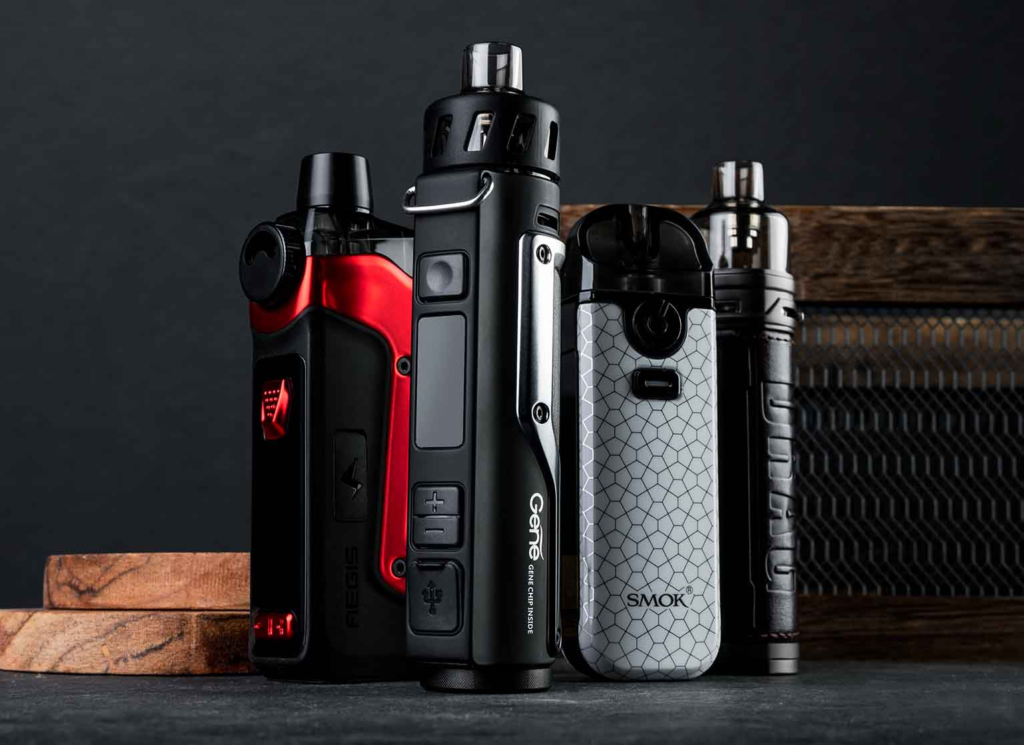Vapes, also known as e-cigarettes or electronic cigarettes, have become increasingly popular as an alternative to traditional smoking. These devices offer a modern approach to nicotine consumption and have sparked significant interest due to their perceived benefits and controversies. At their core, vapes are designed to simulate the experience of smoking without many of the harmful effects associated with combustible tobacco. They operate by heating a liquid known as e-liquid or vape juice, which usually contains nicotine, flavorings, and other chemicals, to produce an aerosol that users inhale. This process eliminates the need for burning tobacco, which is one of the primary sources of harmful substances like tar and carbon monoxide in vape online store traditional cigarettes.

The technology behind vapes is relatively straightforward. Most vapes consist of a battery, a heating element (often called a coil), and a tank or cartridge to hold the e-liquid. When activated, the battery powers the coil, which heats the e-liquid to create the vapor. This vapor is then inhaled by the user, providing a similar sensory experience to smoking. There are various types of vapes available on the market, including disposable vapes, pod systems, and box mods. Disposable vapes are pre-filled and designed for single-use, making them convenient but often less customizable. Pod systems are compact and user-friendly, often used by beginners due to their ease of use and portability. Box mods, on the other hand, offer more control and customization options, including adjustable wattage and temperature settings, which can enhance the vaping experience for more advanced users.
One of the key factors driving the popularity of vapes is the ability to choose from a wide range of flavors. E-liquids come in countless flavors, from classic tobacco and menthol to fruity and dessert options. This variety allows users to tailor their vaping experience to their preferences, which has been a significant draw for many people. However, the flavor options have also raised concerns, particularly regarding the appeal to younger audiences. Critics argue that the enticing flavors may attract adolescents and non-smokers, potentially leading to nicotine addiction at an early age. The vaping industry has faced scrutiny from health authorities and regulatory bodies as a result, with some jurisdictions implementing restrictions on flavored e-liquids to address these concerns.
The health implications of vaping compared to smoking have been a topic of extensive research and debate. Proponents argue that vaping is a less harmful alternative to smoking because it reduces exposure to toxic chemicals and carcinogens found in tobacco smoke. Some studies suggest that switching from smoking to vaping can lead to improvements in respiratory health and a decrease in smoking-related diseases. However, it is essential to recognize that vaping is not without risks. While vapes do not produce the same harmful byproducts as cigarettes, the long-term effects of inhaling e-liquid aerosols are still not fully understood. Research is ongoing to determine the potential health impacts of long-term vaping, and some studies have raised concerns about the presence of certain chemicals in e-liquids, such as formaldehyde and acetaldehyde, which may have adverse health effects.
Nicotine, a primary component of most e-liquids, is a highly addictive substance that can have various effects on the body. While nicotine itself is not the primary cause of smoking-related diseases, it is responsible for the addiction potential of both cigarettes and vapes. For individuals looking to quit smoking, nicotine replacement therapies and e-cigarettes have been used as tools to reduce nicotine dependence gradually. However, the effectiveness of vaping as a smoking cessation aid remains a topic of debate. Some users have successfully transitioned from smoking to vaping and eventually quit altogether, while others may find it challenging to reduce their nicotine intake or become dependent on vaping as a substitute for smoking.
Regulation of vaping products varies widely across different countries and regions. In some places, vapes are tightly regulated with strict quality control measures, age restrictions, and marketing regulations to protect public health. In others, the regulatory framework may be less stringent, leading to concerns about product safety and quality. For instance, the united states has implemented measures such as the Tobacco Control Act and the FDA’s authority over e-cigarettes to address issues related to product safety and marketing. Similarly, the european union has established regulations under the Tobacco Products Directive to regulate e-cigarettes and refill containers. Despite these efforts, challenges remain in ensuring consistent standards and addressing emerging issues in the rapidly evolving vaping industry.
Public perception of vaping continues to evolve as new information and research emerge. Some view vapes as a valuable tool for harm reduction and a potential means of quitting smoking, while others remain cautious due to the uncertainties surrounding their long-term effects. The vaping community itself is diverse, with individuals using vapes for various reasons, including quitting smoking, reducing nicotine intake, or simply for recreational use. As the industry and research continue to develop, it is crucial for users to stay informed about the latest findings and make decisions based on a balanced understanding of the potential benefits and risks associated with vaping.
In summary, vapes represent a significant shift in the landscape of nicotine consumption and smoking alternatives. Their popularity is driven by the desire for a less harmful alternative to traditional cigarettes and the appeal of customizable vaping experiences. However, the health implications of vaping are still being studied, and it is essential for users to approach vaping with a well-informed perspective. As research advances and regulations adapt, the future of vaping will likely continue to unfold, providing new insights and considerations for those navigating the complex world of nicotine consumption.
